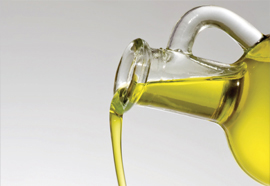Packaging Research Services
-
Package graphics and copy are critical marketing variables, particularly for nonadvertised or underadvertised brands in self-serve shopping environments.
The package on a retail shelf is the last opportunity to influence consumers before they decide to buy. It’s the final sales pitch at the “moment of truth.” The better the package design and copy, the greater the likelihood that consumers will choose that brand. Any new package design, or significant change in an existing package, should always be subjected to the scrutiny of scientific consumer research.
The Starting Point: Qualitative Research
Before new package designs are created, it is always wise to conduct qualitative research to explore target consumers’ knowledge, frames of reference, perceptions, motivations, and needs related to the product category and your brand. What images, elements, phrases, symbols, and illustrations resonate with the target audience? The up front qualitative work helps identify the most important package-design elements and provides guidelines for the creation of new package designs.
PackageOpt™ (Package Optimization)
A package, or package design, consists of shapes, colors, images, fonts, brand name, and messages. The number of permutations of these elements (i.e., unique package designs) can run into the thousands. With PackageOpt™, it is possible to predict consumer reactions to all possible combinations of these package elements.
How Does PackageOpt™ Work?
Once the basic variables of effective packaging for a brand are identified through qualitative research, Decision Analyst's PackageOpt™ research methodology identifies optimal prototype packaging concepts, using choice-modeling experiments. Different brand name treatments, messages, themes, illustrations, imagery, colors, layouts, etc., can represent thousands of possible package designs. Each respondent usually sees 5 to 10 scenarios (i.e., combinations of variables). PackageOpt™ tests subsets of all of these possible combinations to predict the effectiveness of every possible set of elements. The top 10 or 15 packaging concepts are identified for additional package testing, beginning with PackageScreen®.
The package design process typically begins with the creation of a large number of “rough” or early-stage designs. This low-cost packaging research system evaluates early-stage packaging ideas and concepts in batches of 10 to 20 at a time. It identifies the package designs that resonate with consumers so that creative efforts can be focused on the better designs.
How Does PackageScreen® Work?
A representative sample of 300 target-audience consumers are recruited. These participants are invited to come to our encrypted web server and view the early-stage package designs. Each respondent sees all of the package designs one at a time (front panel only) on his/her screen in randomized order. Then each person views the package designs a second time and answers a series of questions about each design. The answers to the survey are fed into a mathematical model to calculate an overall score for each design. The highest-rated designs are recommended for further development.
The next step in the design process is to learn more about the better designs so that further improvements can be made. PackageCheck® provides this diagnostic feedback. PackageCheck® is a proprietary online-based, monadic pretesting system to evaluate early-stage packaging concepts.
How Does PackageCheck® Work?
A representative sample of target-audience consumers is recruited to view each package design online. Each respondent sees only one package design (i.e., a monadic test) and then answers a series of questions, including open-ended questions. The report includes answers to standard questions, compared to Decision Analyst’s action standards, as well as verbatim responses to open-ended questions. The verbatim detail is valuable to creative teams as they strive to improve the graphic design as well as the copy. A typical PackageCheck® study is based on 75 to 100 target-audience consumers.
As packages near the end of the design process, a more complete evaluation is required, including comprehensive measurements to assess all of the important elements of package design. PackageTest® is Decision Analysts’ comprehensive, online packaging research system to evaluate finished (or near-finished) package designs.
How Does PackageTest® Work?
A representative sample is recruited from one of our worldwide online panels, and qualified respondents are invited to evaluate the package design. Recommended sample size is 200. Respondents first see the package’s front panel and later view the other panels. The research design is monadic (i.e., no respondent evaluates more than one package design). The respondents complete a battery of questions and diagnostic ratings about the package. The report includes answers to standard questions, as well as the coded responses to all open-ended questions, along with analysis and interpretation.
Our SellingPower™ mathematical model, based on a number of key variables, calculates an overall score for the package design and compares it to our action standards.
Packaging Research Services
Decision Analyst is a global marketing research and analytical consulting firm with more than 40 years of experience in packaging research. We have tested hundreds of packages over the past two decades for leading consumer goods companies. We are a world leader in online packaging research. If you would like more information about Package Testing, please contact jthomas@decisionanalyst.com, or by calling 1-800-ANALYSIS (262-5974) or 1-817-640-6166.


